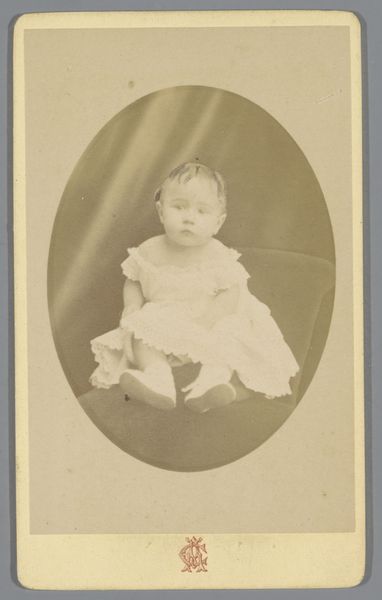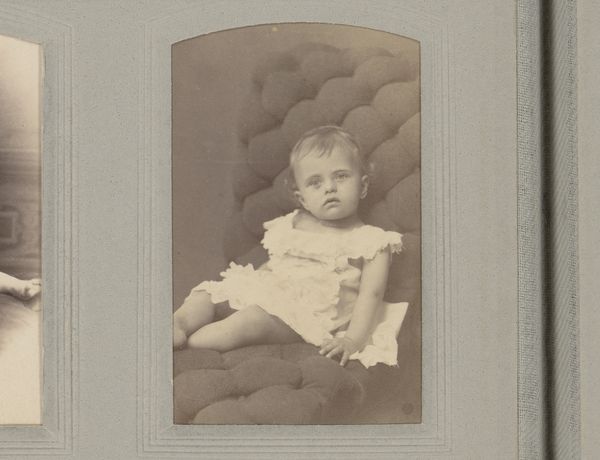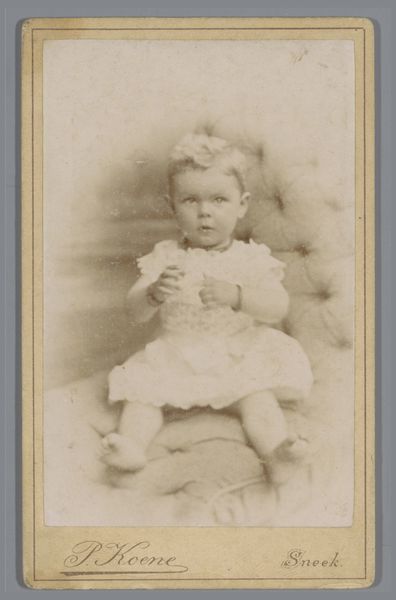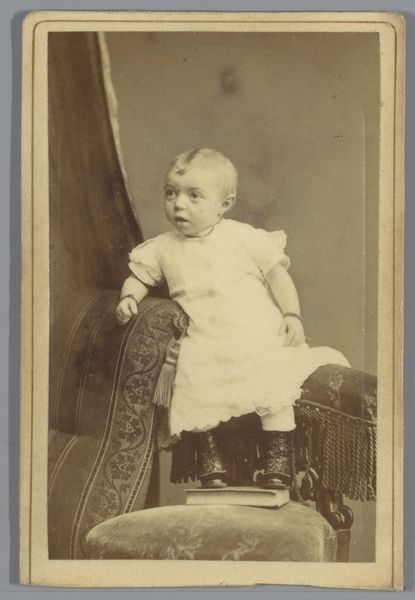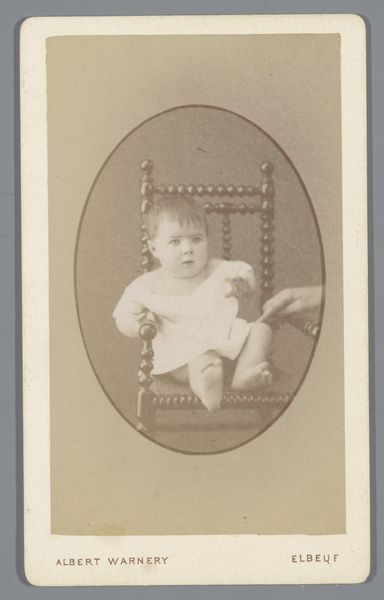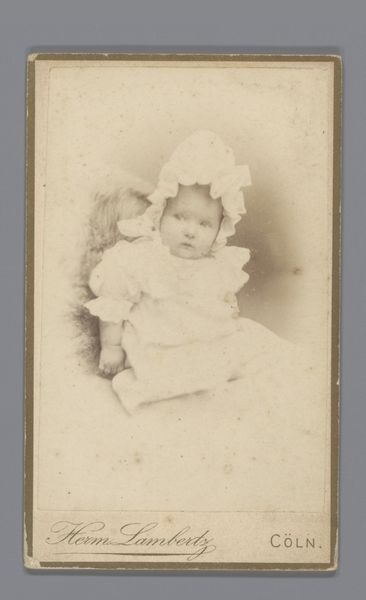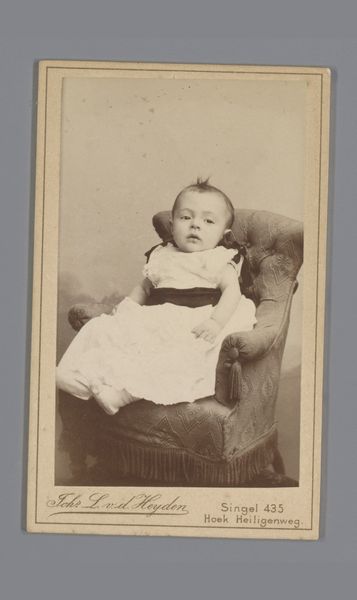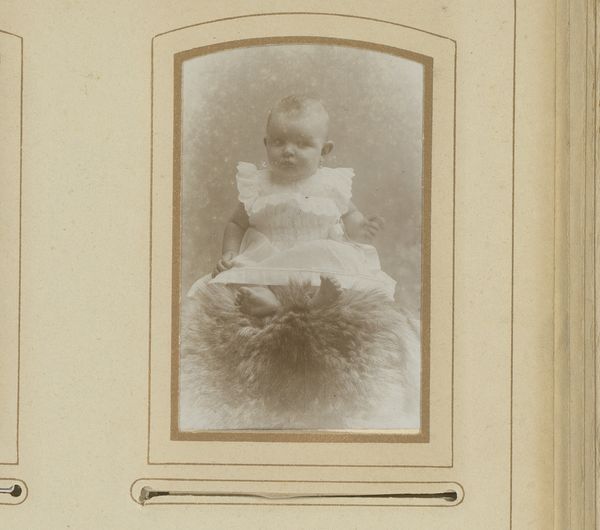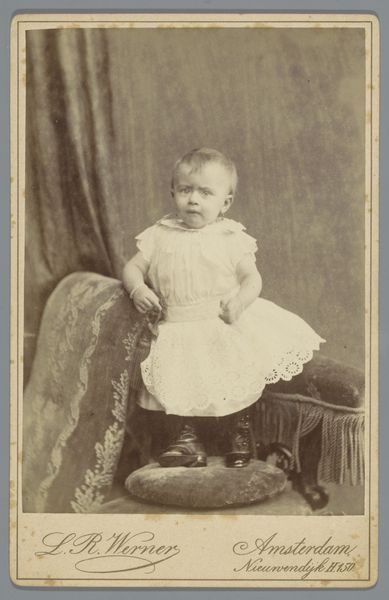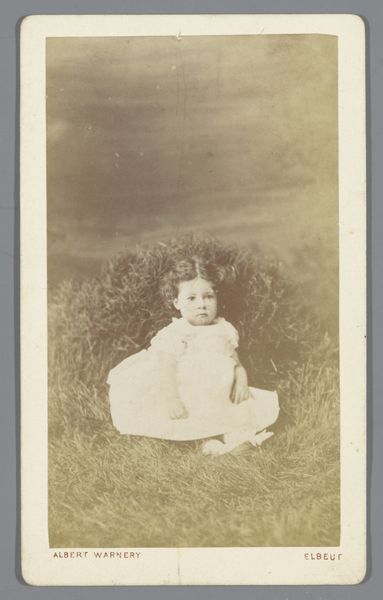
photography, gelatin-silver-print
#
portrait
#
photo of handprinted image
#
aged paper
#
pale palette
#
pastel soft colours
#
light coloured
#
white palette
#
retro 'vintage design
#
feminine colour palette
#
photography
#
historical fashion
#
gelatin-silver-print
#
soft colour palette
Dimensions: height 105 mm, width 64 mm
Copyright: Rijks Museum: Open Domain
Curator: Looking at this photograph, I’m immediately drawn to the delicate textures, almost velvety, of the baby’s dress against the muted backdrop. Editor: Indeed, and we're examining "Portret van een onbekende baby" by Angelo Maria Alessio Caccia, dated between 1868 and 1890. The medium is a gelatin-silver print. The portrait itself offers insight into the culture surrounding infant imagery. The question I have is, where was this child positioned? Curator: It's intriguing to consider the materials. Gelatin-silver prints, given the photographic process, emphasize mass reproduction, making portraits once exclusively for the elite accessible to a broader segment of society. What's striking here is the attention paid to the baby's clothing. The way the fabric drapes suggests someone, presumably the photographer and likely paid by the parents, was aware of the play of light on the material. Editor: Exactly! Studio photography in this era became a booming industry catering to bourgeois desires. Consider the staging; the positioning in front of a curtain suggests this was taken in a studio. But was it exclusively available for that same class? The question of the production line remains relevant to our image analysis. It reflects broader cultural trends: the rise of sentimentalism attached to children. Curator: I agree. The photographic medium's inherent reproducibility allowed for widespread dissemination of such sentimental images, but one has to question where in society and how. The production itself reflects the industrialization and commodification of image-making, but I'm drawn back to the materiality of the clothing, particularly, did Caccia himself provide that clothing to families? It certainly seems a standardized uniform for babies during that era. Editor: Precisely! This leads me to wonder: To what degree did studios shape family portraits in their specific era? These are tools in the making and controlling the idea of the idealized family unit during the mid-to-late 1800s. That said, the work’s location, within the Rijksmuseum, is critical. This act elevates the portrait from simple documentary to national heritage. Curator: Yes, and seeing it today, in the twenty-first century, with that status, it’s less about personal commemoration and more about examining photographic material as a means of encoding social ideals about family. Editor: Absolutely. It highlights the transition of private family life into the public sphere, documented, consumed, and studied. A powerful intersection of the personal and the political through the simple image of a baby.
Comments
No comments
Be the first to comment and join the conversation on the ultimate creative platform.
